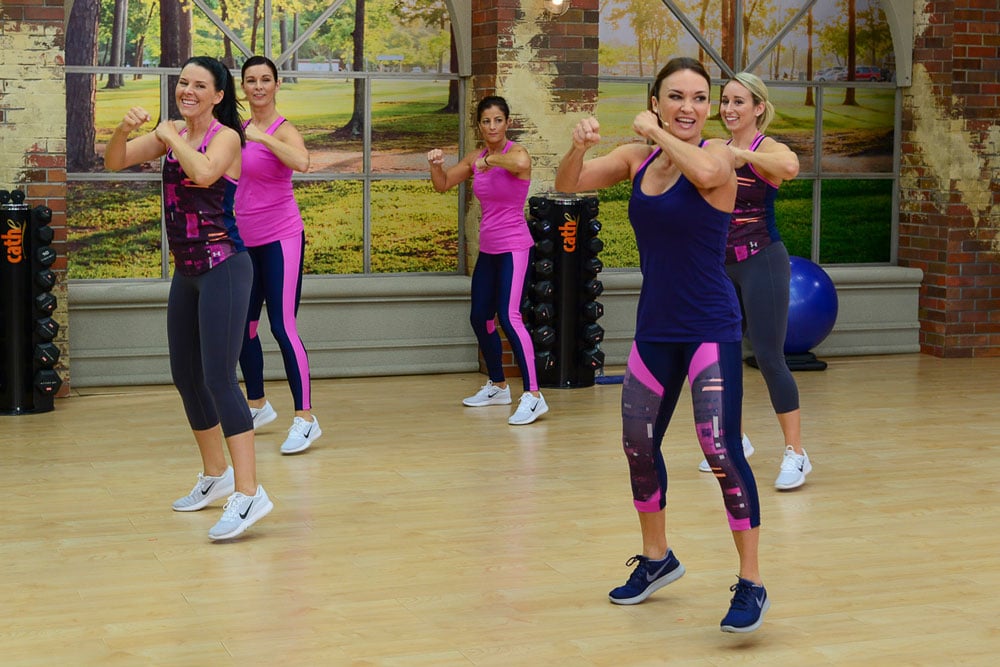If you’re in a hurry, you might be tempted to skip the warm-up and launch straight into your workout. Don’t do it! There’s a reason that fitness trainers recommend warming up for 5 to 10 minutes before the meat of a workout.
Why is the warm-up so important? It helps loosen up your muscles so they’re ready to work hard. Plus, if your muscles are prepared, they can better tolerate the stress of your sweat session. Warming up also gets your heart rate going so that you’re ready to go right when you start your workout. You’ll be able to work out harder and get more out of your session.
Now, let’s look at some science-backed reasons warming up before exercise matters and the consequences of not doing so.
Warming Up Raises Your Core Body Temperature
One reason to warm up is to increase the temperature of your muscles and tendons. As you begin a warm-up your core body temperature rises, and your muscles and tendons get warmer too. Why does this matter? Warm muscles are better able to function. Some studies also show having warm muscles lowers the risk of injury. Although not all studies support this idea, it makes sense because warm muscles and tendons are more pliable and can stretch further without tearing.
The Warm-Up Boosts Blood Flow to Working Muscles
A five or ten-minute warm-up boosts blood flow to your working muscles. In turn, this increases the delivery of oxygen to your muscles for better performance. When more oxygen surges to your muscles, muscle cells can better produce a steady supply of ATP, the energy source that drives muscle contractions. As your core body temperature continues to rise, blood vessels expand in size, boosting blood flow even more, and further supporting oxygen delivery to your hard-working muscles.
Warming Up Reduces Stress on the Heart
Another reason to warm up: do it for your heart and blood vessels. If you approach a high-intensity workout without warming up, you’re asking your heart to go from a resting state to a state where it’s forced to work super hard. Your heart rate speeds up substantially during an intense workout, placing a sudden and increased demand on your heart muscle. In contrast, when you warm up beforehand, your heart rate increases slowly and can adapt in a controlled way to the demands of exercise.
Not warming up is like flooring the accelerator of your car and asking your car to reach 70 miles per hour in seconds. It’s not healthy for your car or your heart. In fact, a study of seemingly healthy men who worked out at a high intensity on a treadmill for 15 seconds found ECG changes suggestive of low blood flow to the heart when they didn’t warm up properly.
A Warm-Up Improves Performance
How about performance? Warm muscles perform better than cold ones. Can you imagine doing an explosive movement like a vertical jump with cold, stiff muscles and joints? You’re more flexible after a warm-up, and your muscles are more conditioned and ready for movement. Plus, your joints have a greater range of motion when your core body temperature is higher. Warming up may not reduce the soreness and stiffness you feel after a hard workout, but it can help your performance during a workout.
Warming Up Get You in an Exercise Frame of Mind
Warming up before a workout also increases blood flow to your brain, and that helps you get into the swing of a workout. You may have noticed that it’s hard to get up off the couch and launch into a workout. You feel so relaxed and even the thought of exercising makes you want to close your eyes and take a nap.
A thorough warm-up helps you break out of your inertia in a slow and controlled manner. Exercise feels even harder when you jump straight into it without warming up first. A warm-up is like sticking your toe in a cold pool and then your foot and leg rather than jumping in with your whole body. It’s less of a shock. Treat your body kindly and do a warm-up.
You can also use a warm-up to visualize your upcoming workout. Some studies show that mentally envisioning a workout improves performance and helps you build the proper mindset. See yourself nailing whatever fitness activity you’ll be doing and conjure up that vision in your mind as you warm up. Visualize greatness!
How to Warm Up
Devote at least 5 minutes to a warm-up, but if you’re exercising in the morning, 10 minutes is better since your muscles are stiffer and colder early in the day. The best way to warm up is to do dynamic movements that work the muscles in your upper and lower body. Good choices are lightly jogging in place, slow jumping jacks, leg kicks, arms swings, and upper body punches. Save the static stretching for after your workout since research shows static stretching before working out may reduce muscle performance.
The Bottom Line
Don’t shortchange yourself on the warm-up. A good warm-up is important for performance—muscles need to be limber before a workout or competition, and warming up will also increase blood flow to the muscles to help with nutrient delivery. A quality warm-up may also prevent injuries by improving your range of motion, as well as reduce the risk of muscle strain or pull. Now you know why it’s so important to do one. Don’t skip it!
References:
- org. “Warm Up, Cool Down”
- com. “The Real Reason You Should Warm Up”
- “Warm Up, Cool Down | American Heart Association.” 01 Sept. 2014, https://www.heart.org/en/healthy-living/fitness/fitness-basics/warm-up-cool-down.
- “Effects of Warming-up on Physical Performance: A ….” https://journals.lww.com/nsca-jscr/Fulltext/2010/01000/Effects_of_Warming_up_on_Physical_Performance__A.21.aspx.
- “Aerobic exercise: How to warm up and cool down – Mayo Clinic.” https://www.mayoclinic.org/healthy-lifestyle/fitness/in-depth/exercise/art-20045517.
- “Importance of Warming Up before Sport – Sports Injury ….” https://www.nsmi.org.uk/articles/injury-prevention/warming-up.html.
Related Articles By Cathe:
Two Types of Warm-ups and Why You Need Both Before Strength Training


